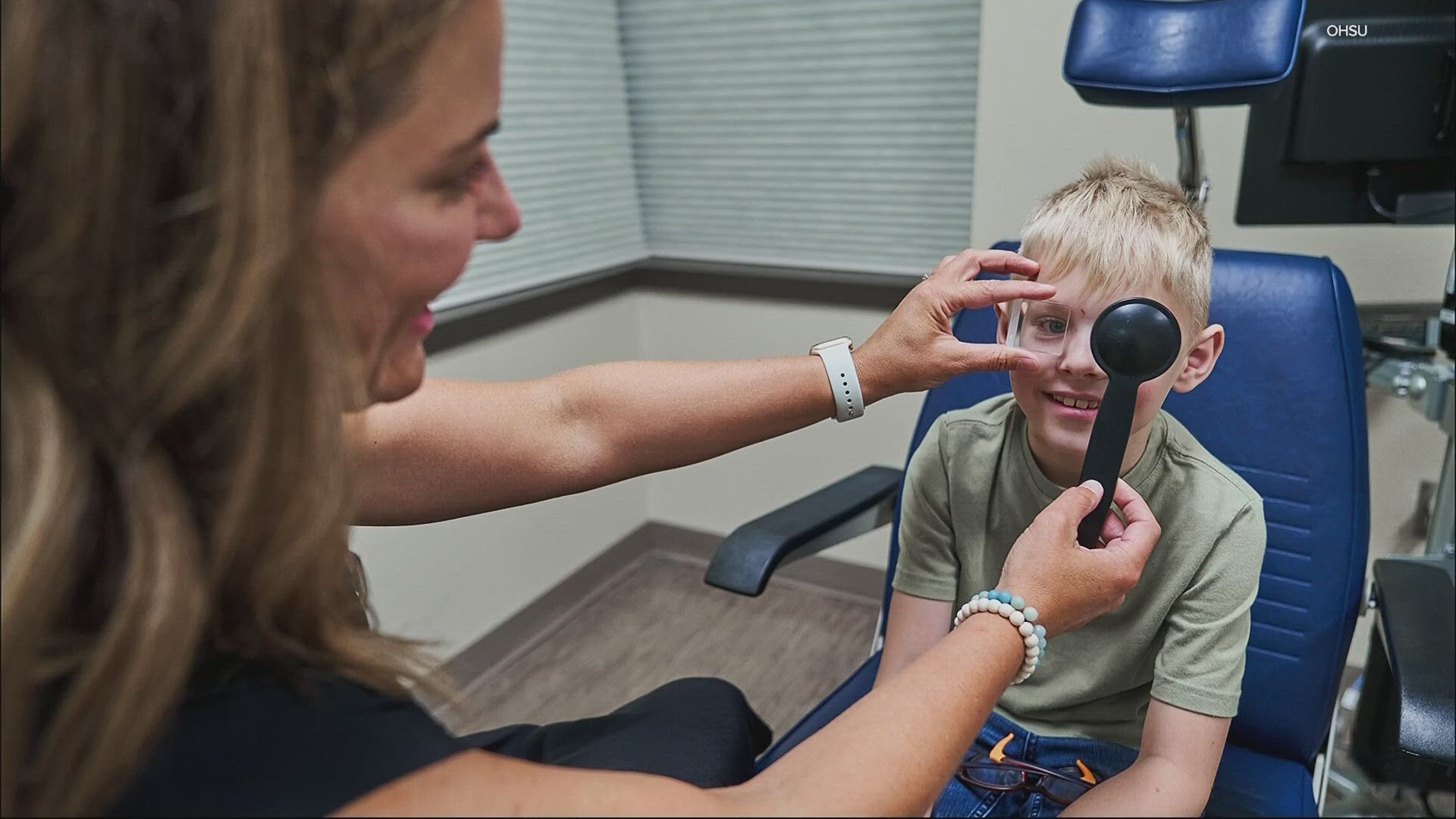PORTLAND, Ore. — A new study by researchers, including a group at OHSU, shows more work needs be done to prevent nearsightedness in children. The eye condition is becoming more common, and one current treatment may not be as helpful as doctors thought.
Nearsightedness causes blurry distant vision and involves the eye becoming more oblong than round. It's a problem that most often develops in children when the eye doesn't stop growing when it should.
“In nearsightedness what happens is that signal to stop growing doesn't happen, so (the eye) continues to grow longer and longer and vision is out of focus,” said Allison Summers, a pediatric optometrist and associate professor of optometry at OHSU's Casey Eye Institute. She is one of several authors on a study just published in Jama Ophthalmology.
Researchers used a very low dose of atropine 0.01% dilating eyedrops in children aged 5 to 12 for two years. Researchers found the common treatment at that dose was no better than a placebo.
“So that tells us that we need to keep looking to find other ways to address this growing problem,” said Summers, who added that those other ways may include a stronger dose of atropine eye drops or more advanced glasses or contact lenses.
More prevention efforts are increasingly important — the World Health Organization says that nearsightedness, or myopia, will increase to affect 50% of the global population by 2050.
Why? There may be several reasons, but at the top of the list is too much screen time.
“And some of those triggers are being on electronics all day. (If) we're staring at our phone, especially if it's very close to the face, then that can trigger some nearsighted growth,” said Summers.
So as a parent, what can you do to help your child? Of course, limiting screen time is important. Beyond that, experts say use the "20-20-20" rule: For every 20 minutes your child is looking up close at a screen or a book, they should look away at something at least 20 feet away for at least 20 seconds. That resets vision and protects the eyes.
Summers also recommends getting out into the daylight.
“Having an hour outdoors where you're not looking at a book or on a phone but just regular playing outdoors in the daylight can be protective against nearsighted growth.”

